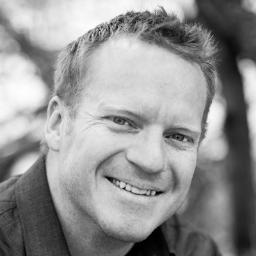 From Catherine: We are all looking to do more in less time. Greg Hartle wrote two fantastic posts on productivity that will finish out this year’s “Best of” posts. You will definitely want to bookmark these!
From Catherine: We are all looking to do more in less time. Greg Hartle wrote two fantastic posts on productivity that will finish out this year’s “Best of” posts. You will definitely want to bookmark these!
* * *
I’ve spent the last 540+ straight days as a digital nomad with no home, no car, and nowhere in particular to be.
The question I’m asked more than any other is, “How do you make a living?” This question bores me to tears, so I usually answer with something like, I wrestle grizzly bears as part of a traveling road show.
The truth is that I make a living the same way I have the last 13 years. By building businesses that allow me to avoid the self-employment trap. That’s a post for another day.
Today, I’ll answer the second most asked question, “How do you stay productive on the road?”
The truth is that the answer to this question is the same as it’s been for the last 13 years. I’ve adopted a simple model for productivity that allows me to be productive anywhere, all the time.
A Framework for Optimal Performance
Despite good intentions, your productivity will be wrecked without a framework. The key is to adopt a framework that allows for maximum flexibility. One that gives you a set of methods for designing a unique and personalized productivity practice, in whatever form works best for you right now, with the understanding that what works best will change over time. Included in this framework must be both sides of the productivity equation, internal and external practices.
The easiest to adopt are the external practices, so let’s start there.
Systems
Start with Systems – because without systems, tools are ineffective. You must adopt a system that manages your commitments and workflow. Every agreement you make with yourself or another takes the immediate form of “unfinished business.” Unfinished business is anything pulling your attention that doesn’t belong where it is, the way it is.
Step One: Get things off of your mind. Anything you consider unfinished business must be captured in a system outside of your mind. Ask yourself, “How am I going to capture this commitment?”
Step Two: Clarify exactly what you’re committing to. Too often, we invite commitments into our life without clarifying what we’re committing to. Ask yourself, “What is it that I’m actually committing to?”
Step Three: Set a reminder. Reminders are critical. Not simply because you don’t want to forget, but because a reminder allows your mind to rest. Ask yourself, “How will I ensure that I remember this commitment?”
There are many systems you can implement. In fact, I have five systems, including a Prioritization Matrix, Weekly Review, and Batching Process. The specific system you adopt matters less than the fundamental idea that you must control commitments, projects, and actions in a very clear, systematic way. Find the formula that works for you and master it. Consider this…
Tools
Once you’ve mastered systems, effectively leverage these tools.
Control Your Inboxes: Live by the mantra- the fewer, the better. And by inbox, I mean any place where you collect commitments for later processing, whether it is information, correspondence, notes, or things you want to look at later. Fewer inboxes means fewer places for important stuff to escape your attention and less time to process everything you need out of them. Ask yourself, “How many inboxes do I have and how can I eliminate some of them?”
Build a Smarter Task List: Maintain a smart, actionable, and updated task list. Avoid having post-it notes everywhere. It’s important to clarify that a task list is not a project list. A task list should have tasks that contain a physical next action that can be accomplished in one block of time and be something for which you are the most appropriate person. Ask yourself, “Do the tasks on my list meet these three criteria?” If the answer is no, do whatever you have to do to get it off your list faster than a Ferrari in a high-speed chase.
Optimize Your Calendar: Obviously, you know what a calendar is and you’re probably using one. Here’s how to optimize it. First, respect it. Guard it like you would guard your entire life savings from Wall Street. Second, make sure you only put time-specific or day-specific actions. Ask yourself, “Am I treating my calendar as sacred territory and does it only contain time- or day-specific actions?” The answer to this question could mean the difference between a productive life and one where you want to punch yourself in the face after every appointment.
There are many more tools and productivity hacks you can adopt, but if you can’t master these three, you’re burying yourself in a world of inefficient work and unnecessary actions. When it comes to tools, remember, less is more.
Along with helping companies take the leap into 21st century business through New Methods, Greg Hartle speaks professionally with businesses, non-profits, and other groups on conscious capitalism, leadership, and integral life strategies.

